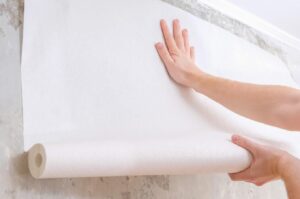
Choosing the right wallpaper paste is crucial for the durability and aesthetics of your walls. It is therefore worth knowing the features that distinguish the particular types of pastes. This means that making the right decision can be done that much easier. To better meet your expectations, we have created an article where we take a closer look at different types of wallpaper pastes and their properties. This is something worth reading to the end.
Types of wallpaper pastes – available options
Wallpaper pastes can be divided into several types, depending on their composition, consistency and purpose. There are cellulose-based, synthetic, and natural products available on the market. Cellulose pastes are among the most popular because they are easy to use, and hold most types of wallpaper well. Synthetic ones are more durable and resistant to moisture, which makes them ideal for use in rooms exposed to water, such as bathrooms or kitchens. Homemade pastes with natural ingredients, such as potato starch or wheat flour, are a good choice for people interested in eco solutions. However, it is important to remember that these types of products do not provide results as good as their professional counterparts.
Properties of wallpaper pastes – what is it worth paying attention to?
When choosing products from a Polish manufacturer of wallpaper pastes, it is important to take several important properties into consideration. The product must adhere well both to the wall surface and to the wallpaper itself. This makes it worthwhile checking whether a given paste is suitable for the type of wallpaper we intend putting on the wall – some products on the market are intended only for specific materials, such as vinyl or fiberglass. The paste’s resistance to moisture and fungi is also important – especially when we are planning to use the wallpaper in rooms exposed to damp. The drying time of the selected product is also an important factor – the shorter it is, the sooner we can enjoy the effects of our work.
How can we use wallpaper pastes correctly?
We need to remember a few basic rules when it comes to using wallpaper pastes. Before starting work, we need to read the manufacturer’s instructions carefully. These contain information on the mixing ratio of the paste with water, as well as its drying time. It is also important that we distribute the product evenly on the wall surface as well as on the back of the wallpaper. When applying the paste, it is worth using a roller or brush to avoid streaks or lumps. Remember that we should not apply too much paste, as this may cause the wallpaper to move and create unaesthetic air bubbles.
Practical tips – how can we avoid mistakes when installing wallpapers?
When we are installing wallpapers using pastes, it is worth keeping a few practical tips in mind that can help us to avoid some common mistakes and achieve a much more satisfying result. We should apply special attention to the careful preparation of the wall surface: dust should be removed, any remains of old wallpaper cleaned and any unevenness levelled. We must also remember to measure the wall carefully and to match the wallpaper pattern – especially if it is not uniform. It is also important to bond the wallpaper right to the edges and ensure we achieve an even level of adhesion over the entire wall surface.
